Interview: Mat Collishaw On Faith, Flowers & Flames
By Something CuratedMat Collishaw is a key figure within the influential cohort of British artists that came to prominence in the late 1980s and early 1990s, graduating from Goldsmiths’ College. His participation in the seminal group exhibition Freeze in 1988, along with peers Damien Hirst and Sarah Lucas, marked a pivotal moment in the evolution of British art, following which he has remained a prolific fixture. Collishaw embraces various mediums, including photography, video, sound and sculpture, often integrating these diverse outputs into immersive installations that form intricate and layered narratives. The artist challenges the viewer’s initial visceral reactions by juxtaposing beauty with provocative subject matter, deftly harnessing shock value. Opening next month, on 7 October 2023, Collishaw will unveil his latest commission for the launch of the Faith Museum, a new cultural institution exploring encounters, experiences and expressions of faith in Britain over 6,000 years. Ahead of the inaugural presentation’s opening, Something Curated spoke with the artist.
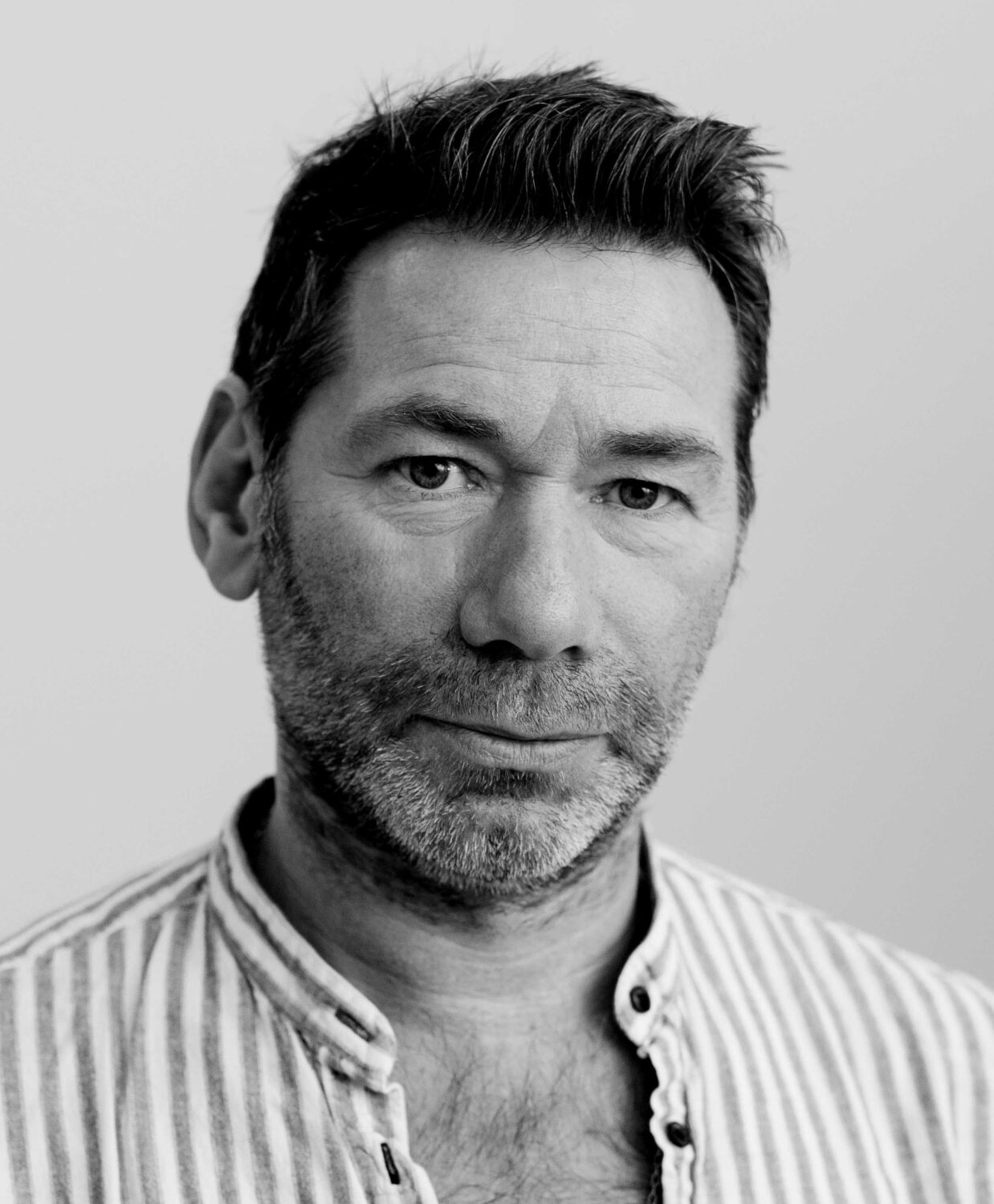
Something Curated: To begin, could you tell us about your latest commission for the launch of the Faith Museum?
Mat Collishaw: I’ve created an animation of a large, burning, blue iris flower that’s projected 6m high onto a transparent gauze in the centre of the large, new church-like exhibition space. It’s accompanied by an audio track I created with my son Alex that features verses from the Bible’s Book of Daniel, Chapter 3. In this chapter, three followers of the Christian God refuse to bow down to a golden idol created by King Nebuchadnezzar. They are thrown into a fiery pit but, although they are engulfed in flames, emerge unscathed. The burning flowers artworks that I’ve been developing for years are an attempt to create a surrogate emblem of the crucifix; essentially an image that combines excruciating pain and suffering with transcendence and solace.
The chords for the musical piece were generated by an AI, giving them an unknowable, quasi mystical quality. We then recorded an opera singer voicing the relevant verses from the Book of Daniel to accompany this chord sequence. The preceding galleries in the museum feature an exquisite collection of relics and artefacts that illustrate the history of faith. It’s hoped that on encountering the room where I’ve installed, visitors experience something like an embodiment of faith that requires no written explanation. It is a flower engulfed by flames, but that appears to thrive on these flames rather than being consumed.
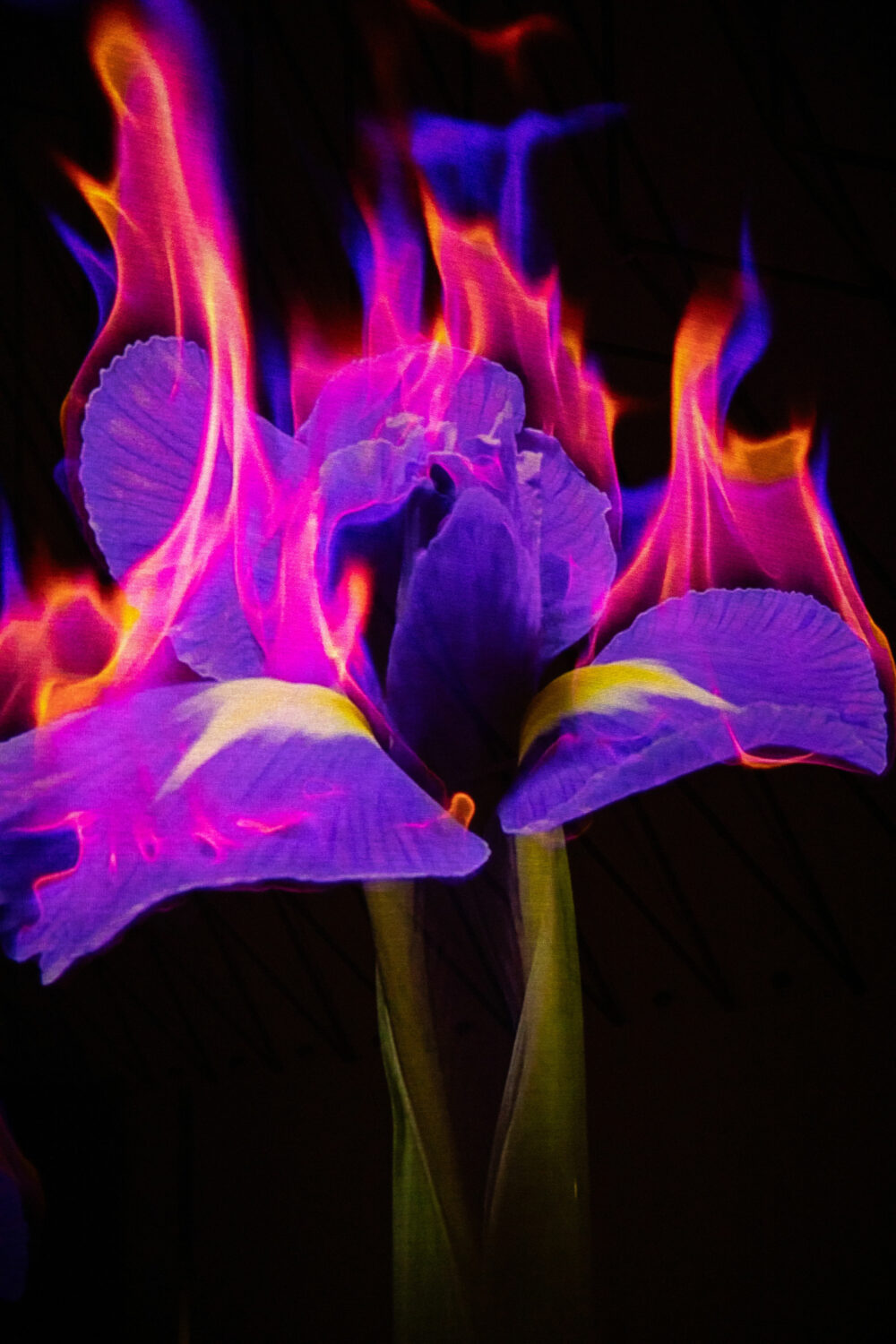
SC: You have worked with flowers for many years and in many different forms — what is the thinking behind the blue iris in particular for this work?
MC: The blue iris appears in many paintings throughout art history, the blue signifying, I think, serenity, devotion and faith and the sword-like sharp petals signifying impending sorrow. Most famously, they appear in Leonardo’s Virgin of the Rocks in the Louvre. The inference being the serenity and devotional aspect of the painting will give way to sorrow and suffering when Christ will ultimately succumb to crucifixion.
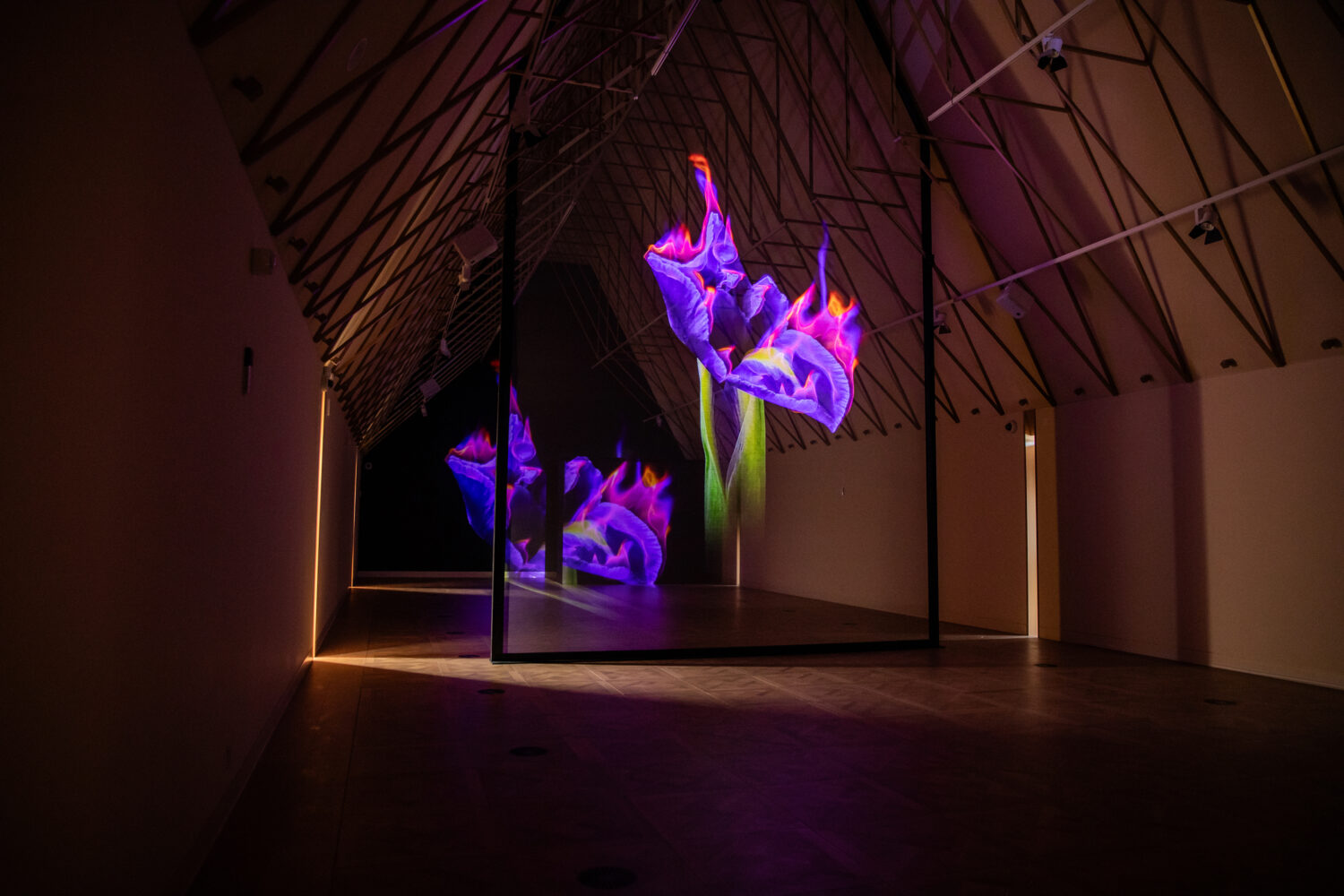
SC: How do you perceive the role of the artist in contemporary society? And as your career has progressed, has your answer to this question changed?
MC: Every artist treads a different path. I think my approach is similar to creating a faceted crystal through which various interests are refracted. I don’t think this has changed over the years although my interests, and therefore the subject matter I address, has evolved.
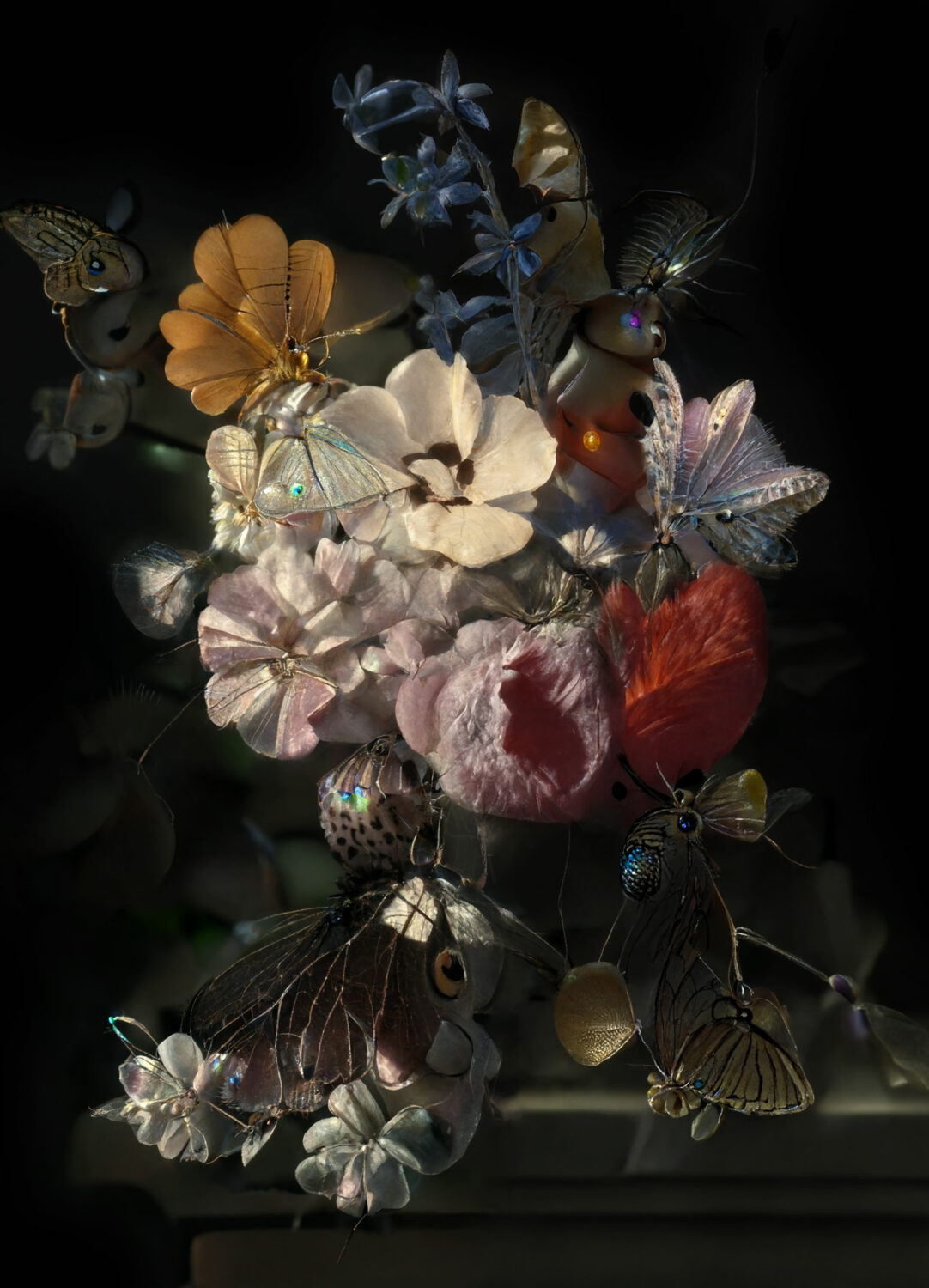
SC: You’ve previously collaborated with diverse professionals, from scientists to musicians, to create work. What interests you in weaving varied perspectives into your practice?
Each artwork I engage with demands different formal requirements, a lot of which are outside of my limited understanding. This necessitates collaborating with experts in various fields. The more I operate in these areas the more I understand the possibilities, which opens up new avenues to pursue. Overall, I feel incredibly lucky that I can experiment with so many different disciplines that keep me and the work I’m undertaking alive and engaged. The bottom line is that I need to make the original idea sing and everything else is subservient to this precondition.
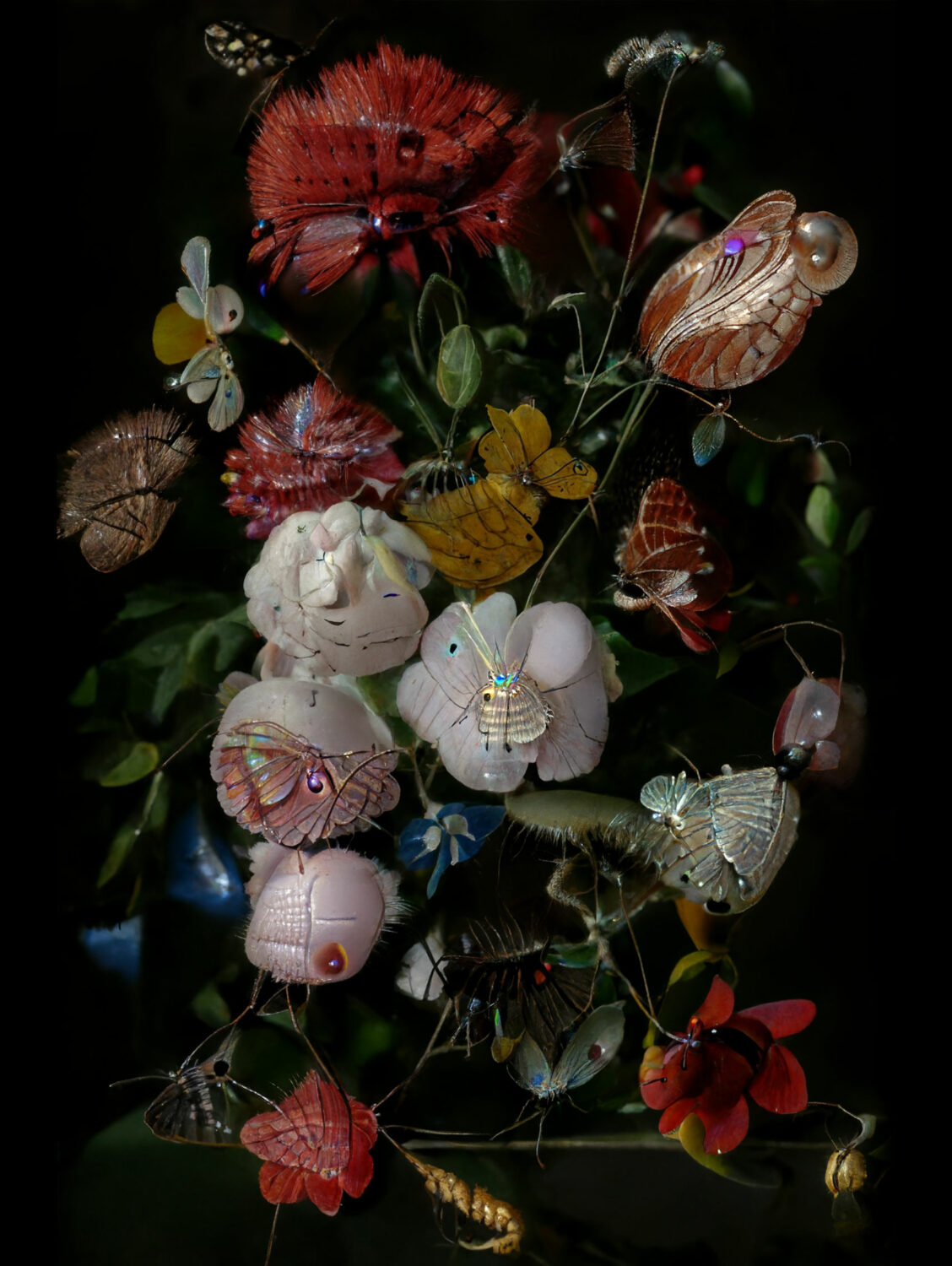
SC: How did your project Heterosis, created with digital artist Danil Krivoruchko and unveiled earlier this year, come about?
MC: I was aware that a new means of distributing artworks was in fruition, but it took me a while to devise an idea that would resonate with this burgeoning media. The starting point was understanding what a digital collectable was. I surmised it as being the definitive ownership of an ephemeral asset. This reminded me of the ownership of flowers which prompted the subject of Tulip Mania, which was a term being referred to in light of the NFT bubble in 2021. Flowers have a very limited blooming period and their status is, to an extent, ephemeral. I decided I’d like to create a collection similar to CryptoKitties where flowers could be hybrid and collectors could decide how their flowers should evolve.
Essentially a digital version of genetic engineering where each flower has their own code or DNA which can be passed onto other flowers as they are hybrid. It was important that the collection wasn’t just a series of jpgs or video clips, it was alive to an extent and utilised a facility of this new medium that would not be possible in any other medium. The flowers were dynamic, they could change and the collectors had an influence on how this change would happen. Danil Krivoruchko and Snark Art did an incredible job building the digital flowers and the algorithms necessary to make the collection work effectively.
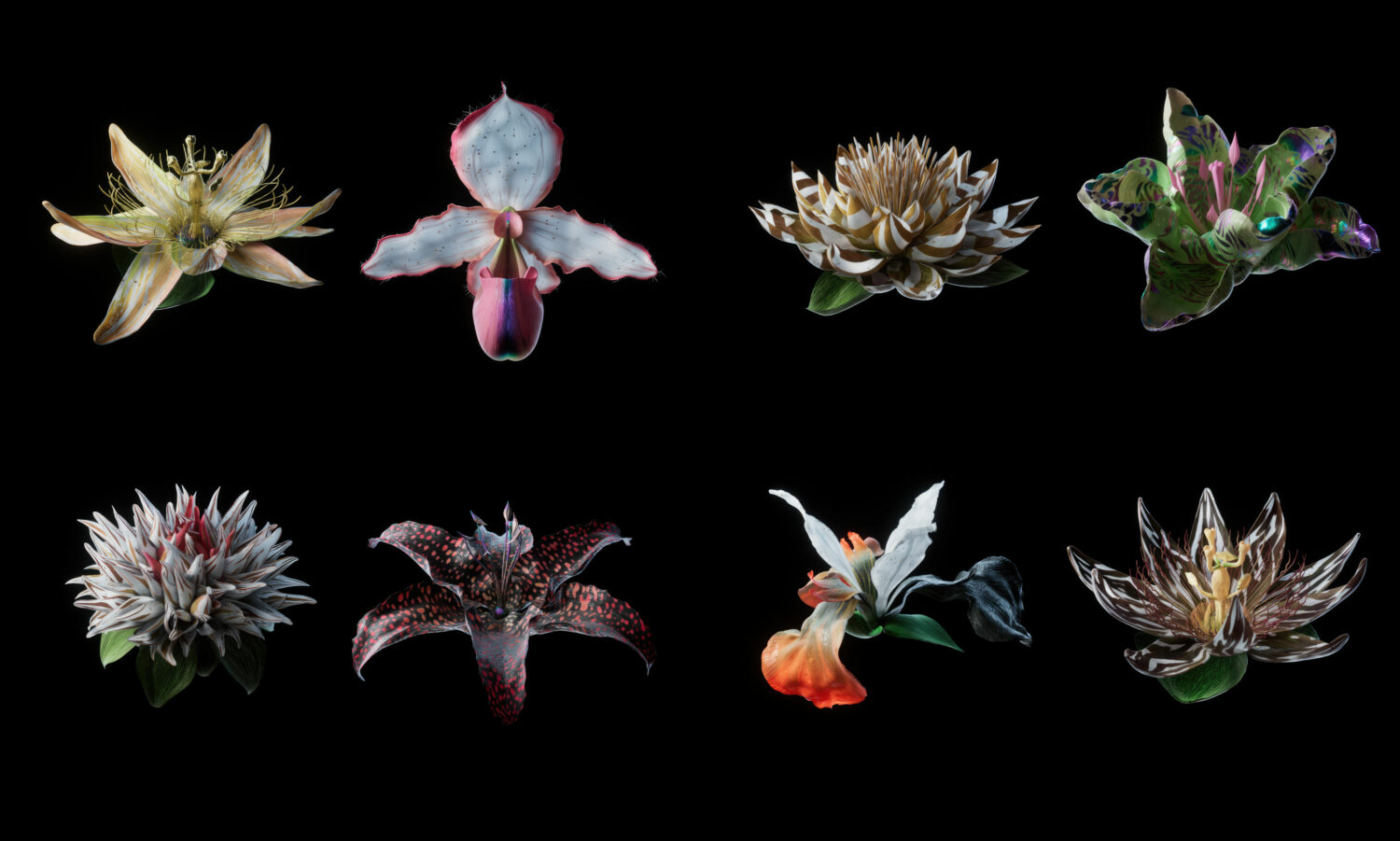
SC: And what are you currently reading?
MC: Like a lot of people, I’m dipping in and out of various books then nodding off to sleep. The Day of the Locust by Nathanael West, On Human Nature by E.O. Wilson and anything on Dante’s Divine Comedy for a new project I’m developing.
Feature image: Mat Collishaw, Eidolon, 2023 at The Faith Museum, Bishop Auckland